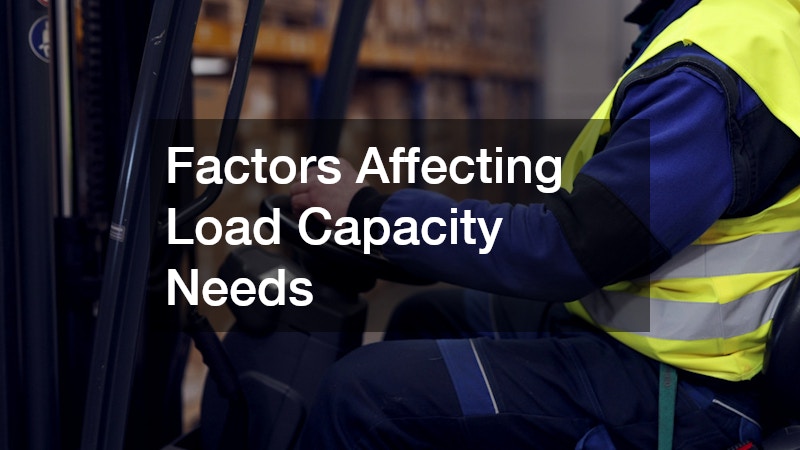When considering the purchase of a forklift, it’s essential to understand the key features to look for to ensure you invest in a machine that meets your specific needs. A good forklift can greatly enhance productivity, safety, and efficiency in your operations. This article will guide you through the top considerations when shopping for fork lifts for sale
Understanding Your Load Requirements
A critical first step is understanding the type and weight of the loads you will regularly lift. Different operations have varied load requirements; hence, selecting a forklift that aligns with your specific needs is vital.
Misjudging your load requirements can lead to overworked equipment and potential safety hazards.
Evaluating your existing loading and unloading activities can provide valuable insights into the necessary load capacity. Attention to detail ensures the forklift will function optimally and facilitate operations without causing delays. Remember, the right choice can impact both efficiency and safety.
Assessing Forklift Load Capacity Ratings
Learn how to interpret capacity ratings and how overloading can impact forklift safety and performance. Each forklift comes with a manufacturer’s rated capacity, which specifies the maximum load weight the forklift can safely handle. Exceeding these ratings can lead to operational challenges and increased safety incidents.
It’s crucial to understand the relationship between load size, weight distribution, and lift height, which all play a role in determining the forklift’s effective capacity. Overloading or improperly loading can lead to tipping and subsequent hazards. Awareness of these factors ensures safer and more efficient use of forklifts.
Factors Affecting Load Capacity Needs
Consider factors such as the lift height, load shape, and handling environment to determine capacity needs. High stacking heights can change the center of gravity, necessitating adjustments in the forklift selection. Similarly, unusual load shapes and sizes can further complicate determining the appropriate capacity.
The operational environment also significantly impacts your capacity needs. Indoor operations might favor more compact forklifts, while outdoor activities may require robust models with higher load limits. Each setting demands specific features that ensure seamless operations without risking safety or performance.
Understanding Electric Forklifts
Explore the benefits of electric forklifts, including lower emissions and quieter operation. Electric forklifts are often preferred for indoor use due to their minimal exhaust output. This makes them a cleaner choice for operations where pollutants could affect product quality or worker health.
The quieter operation of electric models reduces noise pollution within facilities, promoting a more pleasant working environment. This can significantly impact worker morale and productivity, decreasing stress and enhancing communication. Efficient and reliable, they minimize downtime and improve operational flow.
Advantages of Internal Combustion Forklifts
Delve into the durability and power of internal combustion forklifts, ideal for outdoor applications. These forklifts operate well on multiple surfaces, providing rugged performance in even the toughest conditions. Their power and endurance make them indispensable for heavy-duty tasks.
Internal combustion engines provide greater horsepower, offering needed torque for demanding environments. They excel in applications requiring long-distance travel or continuous, heavier lifting operations. Versatile, this type of forklift can use various fuel sources such as diesel, gasoline, or propane.
Comparing Operational Costs
Analyze long-term operational costs based on your specific usage patterns and maintenance expectations. Electric forklifts, while requiring upfront investment for batteries and charging infrastructure, often yield savings through reduced fuel costs and lower maintenance needs.
Internal combustion forklifts may present lower initial costs but have higher fuel and maintenance expenses. Balancing these considerations is essential in choosing the best long-term, cost-effective solution fitting your organizational model. Thoughtful financial assessment can result in substantial budget savings.
Essential Safety Features
Review crucial safety elements such as operator assist systems, seat belts, and overhead guards. A strong focus on safety not only protects your workforce but also minimizes operational risks and liabilities. Ensuring these features are standard on your forklifts can prevent costly accidents and improve overall workplace safety.
Modern forklifts often incorporate advanced systems designed to assist operators in safely managing loads. Whether it’s assisting in stabilization during tricky maneuvers or offering fail-safes for new operators, these features are vital. Safe operations build a responsible and trusted working environment.
Innovative Technology Enhancements
Discover modern technology upgrades, including sensors, cameras, and automated systems. Such features can significantly enhance both utility and safety, offering a competitive edge in efficiency. Automation introduces consistency and precision into operations, decreasing human error.
Technology integration can include monitoring systems that provide real-time feedback to operators. These systems can adapt to various working conditions, ensuring optimal performance without compromising safety or efficiency. Predictive maintenance tools also alert users to issues before they become critical, ensuring steady operations.
Training and Ergonomics
Evaluate the importance of ergonomic design and the availability of training for operators. Ergonomic enhancements are fundamental in reducing occupational strain and fostering a healthier work environment. By ensuring equipment is comfortable, operators can perform tasks more effectively and efficiently.
Investing in a forklift involves careful consideration of various features that can impact productivity and safety. By focusing on capacity, fuel type, and safety and technology features, you can make a well-informed decision that supports your operational needs and growth. Such a meticulous approach ensures your investment yields maximum return while fostering secure, efficient workplace practices.




